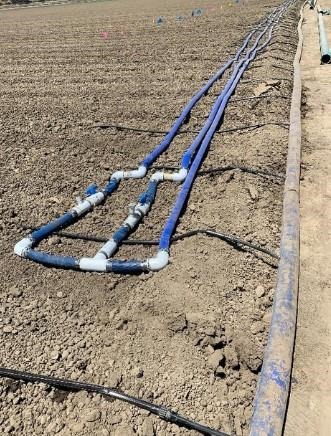Photo 1. Lettuce planted in 5 rows on 80-inch-wide beds germinated using shallowly buried drip tape.
Single-use drip for germination of vegetables works well on many soil types where the water can move laterally to wet seedlines six inches or so to the side of the tape (Photo 1). This is a different mode of wetting the soil than sprinkler irrigation where water moves downward into the soil. Kerb (pronamide) is the principal lettuce herbicide and is quite water soluble. This characteristic of Kerb can result in it being moved too deep in light textured soil with heavy irrigations; this can result in poor weed control if Kerb is moved below the depth where weed seeds are germinating (e.g. the top 0.5 inch). In drip germinated lettuce, water moves upwards and laterally which facilitates keeping Kerb in the upper 0.5 inch of soil where it remains more active on germinating weeds.

Photo 2. Manifolds to inject Kerb
In drip germinated fields, the label allows for Kerb to be sprayed over the seedlines and then activated with the germination water. The label does not currently allow injecting Kerb into the irrigation water. Corteva is in the process of expanding the Kerb label to allow this application method. In 2021 we conducted an evaluation with a cooperating grower on a site with Mocho loam soil to evaluate the efficacy of Kerb injected in the drip system with the first germination water. Two methods of applying Kerb were tested: 1) the traditional method of spraying the material post planting on the soil surface and incorporating it with sprinkler irrigation (1.5 inches first germination water) and 2) injecting Kerb in the drip irrigation system with the germination water (1.9 inches first germination water). In the drip injection, the Kerb was injected between hours 10 and 11 of a 14 hour irrigation set. The material was injected into a separate manifold from the grower's system to keep it separate (Photo 2). Two rates of Kerb were tested: 3.5 and 5.0 pints/A. Weed counts were made on 19 and 26 days after the first irrigation.
In the first weed evaluation Kerb at both rates significantly reduced the number of purslane plants for each application method compared to the untreated control. There was no difference in the yield in any of the treatments in the sprinkler incorporated treatment, but there was an indication of slight yield reduction in the 5.0 pint/A rate in the drip applied Kerb treatment. These results indicate that injecting Kerb into the drip system during germination of the crop can provide good weed control in lettuce.
These studies help adapt the use of Kerb for a new irrigation technology and helps growers manage weeds better. It is especially important to have low to moderate weed pressure in fields when relying on autoweeders to conduct later weeding operations. Low weed populations help the automated technologies work more efficiently. All of this is to the good to help growers manage costs and to adjust to new realities with less labor to grow labor-intensive crops.
Source : ucanr.edu